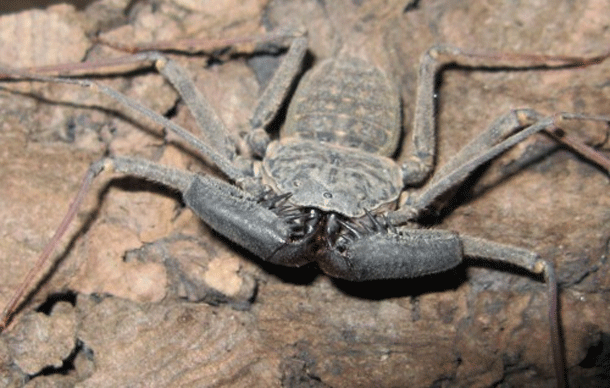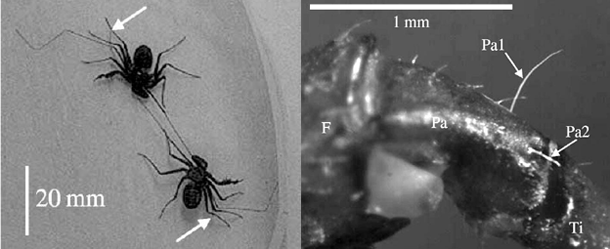
If any group of animals looks like a nightmare made real, it’s the whip spiders. Also known as whip scorpions, these creatures look like flattened versions of true spiders, and they’re close relatives of their namesakes. Their front pair of legs has been transformed into long ‘whips’, which they flail ahead of their bodies to search of prey. Anything unfortunate enough to make contact gets grabbed by the whip spider’s massive pincers, each twice as long as the animal itself and tipped in fiendish spikes. Despite these fearsome weapons, fights between whip spiders are more sedate affairs. They’re more like dances, carried out to strict protocol and consisting largely of bad vibes. Two whip spiders circle one another and start gently probing each other with their whips. These movements become increasingly jerky and intense until the spiders start rapidly vibrating their whips in front of their opponents, without touching them. At this point, one fighter usually retreats. Naive individuals only ever come to blows in 27 percent of contests and experienced ones only attack on 9 percent of them. Roger Santer and Eileen Hebets have found that the vibrating whips are the key to a speedy resolution. The whip spider Phrynus marginemaculatus detects these vibrations with exquisitely sensitive hairs known as trichobothria, found along their legs. A few years ago, the duo recorded electrical signals from the hairs, and found that they respond to vibrations of the same frequency as those made by the whips. Now, they’ve found that when they shaved the hairs from rival whip spiders, the threat displays went on for around twice as long and were three to four times more likely to escalate into physical fights. Santer and Hebets think that the vibrations allow the combatants to advertise their size and strength. This gives them enough information to save energy and avoid injury, by calling off a fight if they know they’re going to lose. Similar hairs are found throughout the arthropods – the group that includes insects, spiders, scorpions, crustaceans, and so on. Santer and Hebets suggest that the whip spider’s vibration-based messages could be a common style of communication within this varied group.
Santer & Hebets. 2011. Evidence for Air Movement Signals in the Agonistic Behaviour of a Nocturnal Arachnid (Order Amblypygi). PLoS ONE http://dx.doi.org/10.1371/journal.pone.0022473Image: (source)

Reference:













